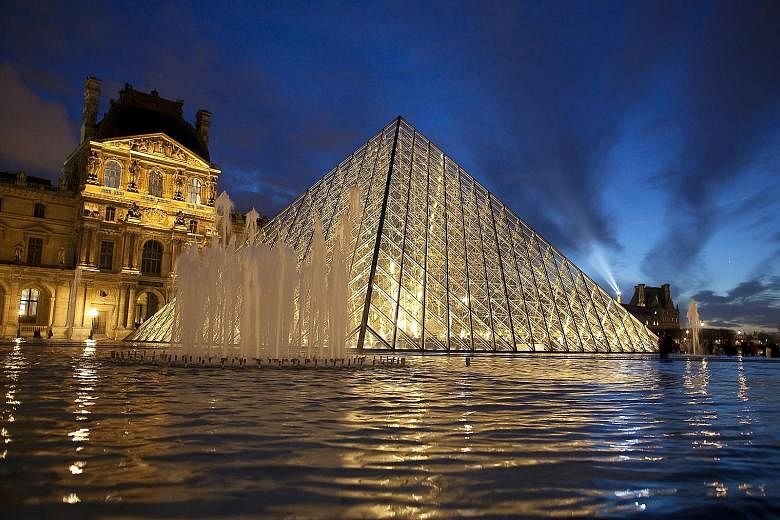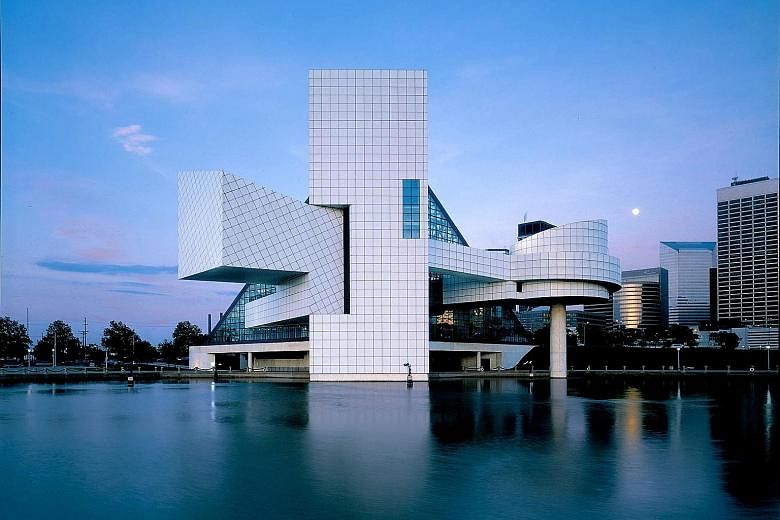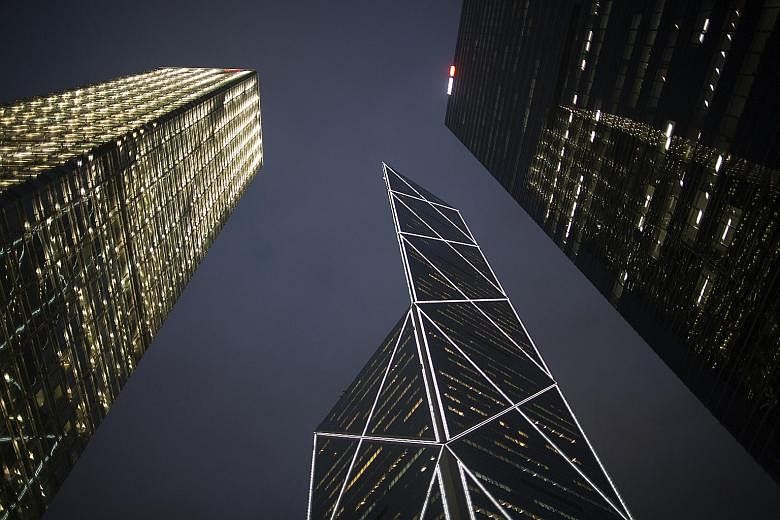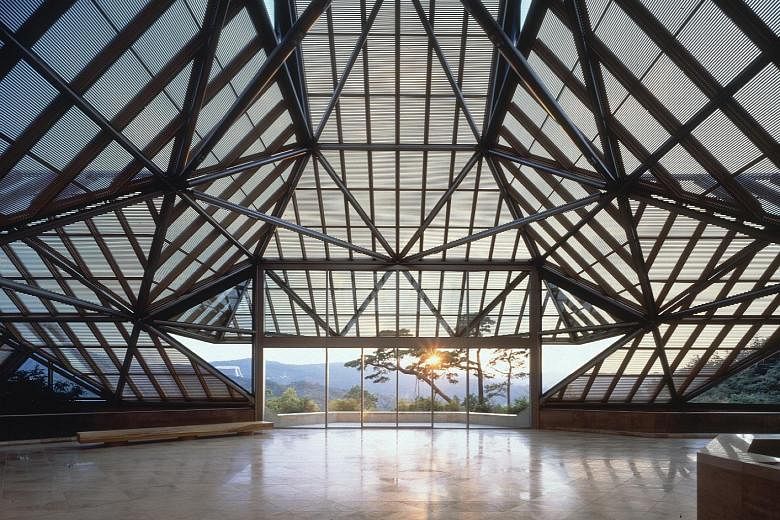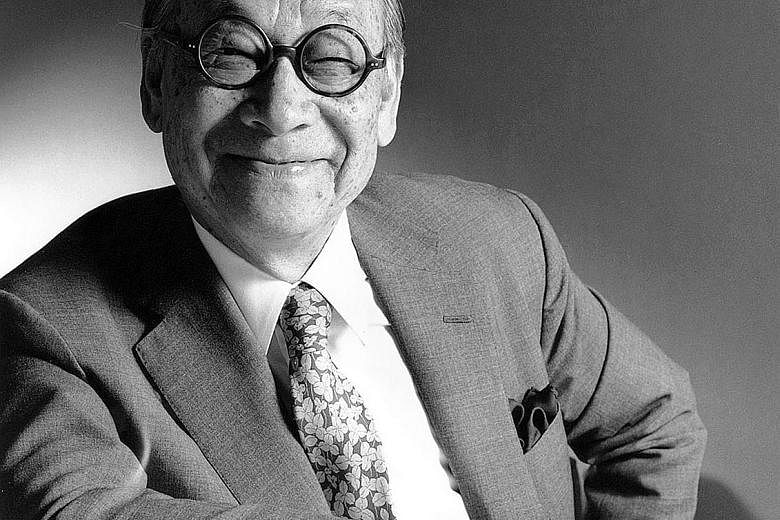NEW YORK • In Singapore, he is responsible for three landmarks - OCBC Centre, Raffles City and the trapezoidal The Gateway in Beach Road.
Chinese-American architect Ieoh Ming Pei, more well-known as I.M. Pei and who celebrates his 100th birthday today, also made his mark with other iconic buildings that many Singaporeans would have come across while travelling abroad.
They include the Bank of China skyscraper in Hong Kong, the glass pyramid at the Louvre Museum in Paris and the Suzhou Museum in China.
Pei, born in Guangzhou on April 26, 1917, has been hailed as a master of geometric form, technical transparency and poetic landscape.
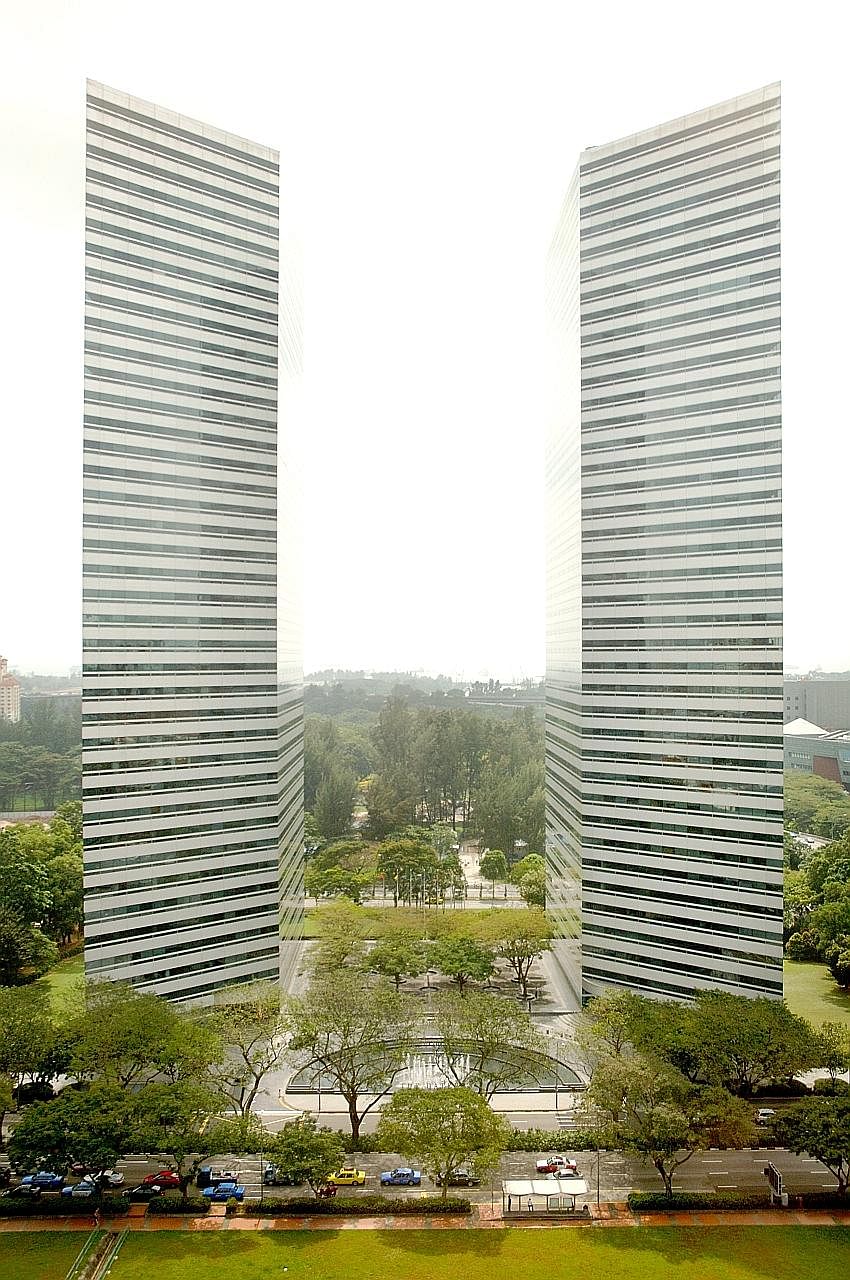
The son of a banker, he grew up in Hong Kong and Shanghai.
He studied architecture at the University of Pennsylvania, Massachusetts Institute of Technology and Harvard in the United States.
After working for seven years for a New York developer, he set up his own firm I.M. Pei & Associates in 1955.
According to Architectural Digest, his early towers and slabs of waffle-formed concrete in New York, Boston and Philadelphia are mid-century masterworks while many of his later designs, such as those for the Museum of Islamic Art in Doha, Qatar, and Miho Museum outside Kyoto, Japan, combine Western modernist architecture with other cultural traditions.
Over the course of his career, said New York magazine, Pei has tapped on influences from Chinese gardens and ancient Colorado cliff dwellings to a fountain in a Cairo mosque.
One factor - a willingness not to stay in a comfort zone - explains why he and his craft have stood the test of time.
According to New York magazine, architect and critic Michael Sorkin called Pei in 1987 and half-jokingly asked if he was the right man to design the Rock and Roll Hall of Fame in Cleveland in the US.
"What do you know about rock and roll, I. M.?" Sorkin asked.
Pei said he knew all about popular music because his son had given him a book about music.
Similarly, when the call came to design a museum in Doha, Pei, then in his 80s, was humble enough to revisit his education and go back to the drawing board to forge a fresh vision.
A signature style, he once said, is of no help to an architect.
"I don't envy the architects who have such a strong stylistic stamp that clients would be disappointed if they do not get the same look in their projects… I think I've greater freedom."
But he is also careful not to be too much out of sync with a location's sense of place and history.
According to The Oklahoman newspaper, Pei had already voiced this stand - way back in 1965 - in a Life magazine article: "The city has to echo life. If our life is rough and tumble, so is the city.
"I've always felt that ugliness with vitality is tolerable. The great danger our cities face today is that their vitality will be sapped by too much concern for instant beauty."
Pei retired from the firm he co-founded, Pei Cobb Freed & Partners, in 1990, but continued working on projects - including with Pei Partnership Architects, started by his two sons - into the early 2000s.
His accolades over a career that has stretched more than 50 years include the Pritzker Prize, the Oscar for architects, in 1983.
